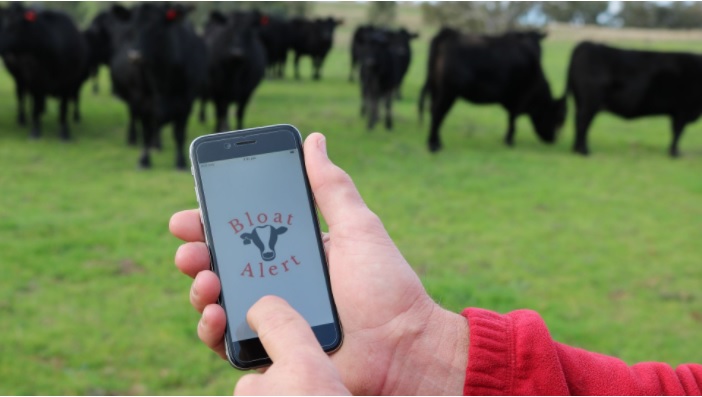
The new ‘Bloat Alert’ app has been devised by researchers at Charles Sturt University in Wagga Wagga. It allows cattle producers to alert others when bloat starts occurring. Photo: Charles Sturt University.
Six cases of cattle bloat in southern NSW have been reported on Charles Sturt University’s new ‘Bloat Alert’ app in the past week.
Professor Bruce Allworth, who is based at the university’s School of Agricultural, Environmental and Veterinary Sciences in Wagga Wagga, said producers in southern NSW and northern Victoria should remain vigilant of the condition.
“Notifications have started to occur on the app, and producers should be aware bloat is occurring in their area,” he said.
“Producers with the app will already have been notified, but we expect the next six weeks will be the main bloat risk this year.”
Professor Allworth said all cases had occurred on either lucerne or subclover-based pastures.
According to the NSW Department of Primary Industries, bloat is a risk when animals are grazing young, lush pasture, particularly if the pasture has high legume content (clover, medics or lucerne).
Ruminant animals such as cattle produce large volumes of gas during the normal process of digestion. This gas is either belched up or passes through the gastrointestinal tract.
If something interferes with gas escape from the rumen, bloat occurs. This can often be fatal.
The ‘Bloat Alert’ app was developed as part of Charles Sturt University’s research into bloat in southern beef production systems.
Professor Allworth said there are currently 132 users on the app, and of the six cases reported so far, three producers lost cattle. In the three remaining cases, bloat was noticed but no deaths occurred.
Cases of bloat in cattle have also been reported in northwest NSW and South Australia.
Professor Allworth urges all producers with iPhones to download the free app to be instantly notified when a case occurs in their postcode area. This will then alert other local producers that bloat is occurring in the area.
He said the more producers who download and use the app to report cases, the more useful it will be to the whole industry.
The app will also allow scientists to measure the level of bloat in specific regions. The information gleaned will, in turn, allow scientists to better understand the exact conditions in which it manifests.
Producers should be monitoring their cattle, particularly on clover-dominant pastures, and when grazing lucerne, and use preventive measures such as blocks, loose licks and/or access to hay.
The ‘Bloat Alert’ app can be downloaded from the App Store, and more information is available on Twitter.








